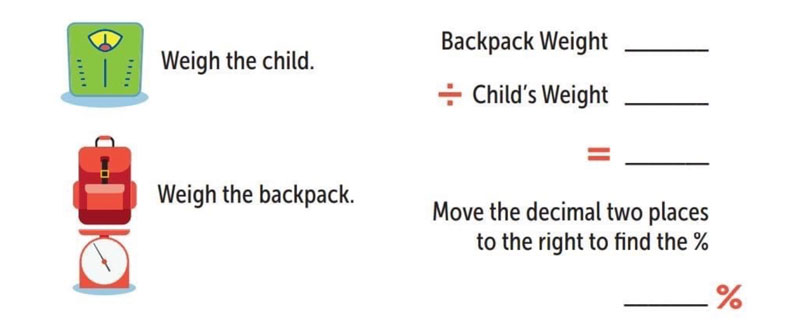Posture and Backpack Safety

Back to school season is here! As August speeds by, most schools are officially welcoming their students back into the classrooms this Fall. It’ll be a nice change for students, parents, and teachers after spending this last year adapting to remote learning due to COVID-19. However the transition will bring its own challenges not just with COVID-19 requirements, but with students and their heavy backpacks. Some schools last year had a hybrid of in-person and remote learning and those students backpacks were heavier than ever. They had to carry everything around in their backpacks. They had to bring the backpack home and then bring it back to school the next day, just to have to carry it around the hallways.
Students are expected to carry around a backpack that may weigh more than them. Carrying too much weight on the spine, especially in younger students, can strain muscles and joints and may lead to neck pain, upper back tension, and headaches. This prolonged period of time, especially with a heavy load, can cause a student’s spine to distortion. These postural distortions cause spinal misalignments and, if left untreated or addressed, can weaken the nervous system resulting in, not only pain and dysfunction but organ disease as well.
Another danger of a heavy backpack is the risk of falling. If the backpack is too heavy, the student may change the way they walk to offset the load putting them at a higher risk for falling. Or they may trip while wearing it and/or may even hit another student with it on.
You may be asking yourself right now, “how do I know if my child’s or student’s backpack is too heavy?” Good news because there is a way to determine if the bag is too heavy! The Association of New Jersey Chiropractors put out the formula below to help families and schools find out what “safety zone” a backpack falls under. If the backpack weighs more than 15% of the student’s body weight, then it is too heavy for them. Remember to check the weight periodically throughout the school year since items tend to accumulate and work load changes.
There are a few ways that you can combat postural distortions and spinal misalignments due to a heavy backpack:
- Make sure it is being worn correctly with straps snug on both shoulders. Avoid wearing it on one shoulder.
- Try to cut back on how much goes into your child’s backpack particularly personal items.
- Consider investing in a rolling backpack that your child can pull behind them.
- If there is no other way for your child to lighten his/her backpack’s load, be sure to have him/her stack the heavier books closer to the back rather than the front. Or have them carry some of the heavy stuff in their hands to even out the load.
- Advise your child to not look down on their phones with their backpack on. The weight in the bag pulls the child’s spine backwards and if they’re looking down at their phone, there is added stress and strain to their upper back, neck and shoulders.
- Be aware of your child’s school habits at home to minimize abnormal postural distortions and spinal misalignments.
Ever since the pandemic, students and people in general have spent far more time looking down on their tablets, phones and laptops compared to their normal usage. In the eyes of a chiropractor, this is a major issue. In previous blogs we talked about how to improve your posture and one of the ways was to take steps to avoid what we call “tech neck.” Tech neck occurs when people spend long periods of time looking down at their technological devices like a phone, laptop, video game, or tablet. Add to it the time a student spends looking down at notebooks, textbooks or writing essays and doing assignments. That’s what we call “student neck” in our office. Over time, “student neck” can also lead to postural distortions and spinal misalignments eventually causing pain, dysfunction and, ultimately, organ disease.
There are a few ways that we can combat the possibility of a student (or an adult) from developing these issues. First, you can be sure that they are taking enough breaks in between what normally would be a long session of looking down. A good rule of thumb is that after approximately 5 minutes of a position your spine begins to adapt to that change, so that being said make it a priority to move around for a few minutes during a long study or work session. You can also invest in a laptop stand or a stand that elevates the computer, laptop or tablet.
Remember that posture is the window to the spine and if your child or your student’s posture looks off with their backpack on, then weigh it and check to see if it is safe for them to carry.

- Red Zone: If the bag weighs more than 15% of your child’s body weight it is too heavy. Check that backpack immediately!
- Yellow Zone: If the bag weighs 10% to 15% of your child’s body weight is is starting to get heavy.
- Green Zone: If the bag weighs less that 10% of your child’s body weight, your child is good to go!
